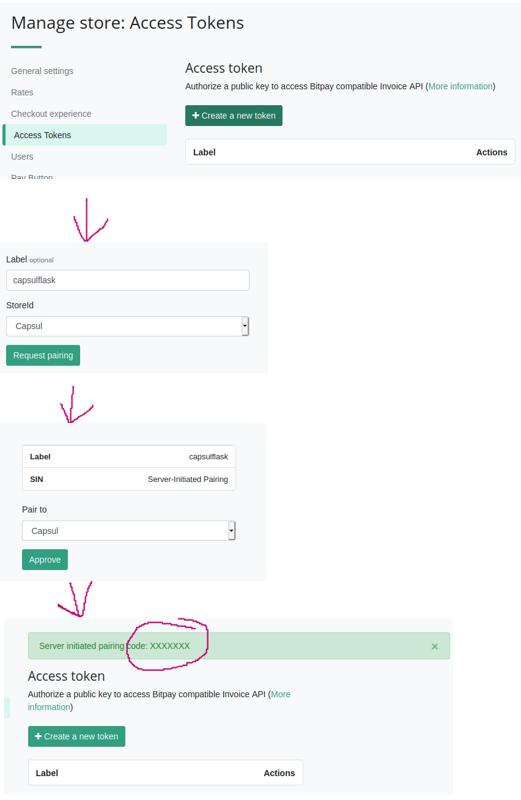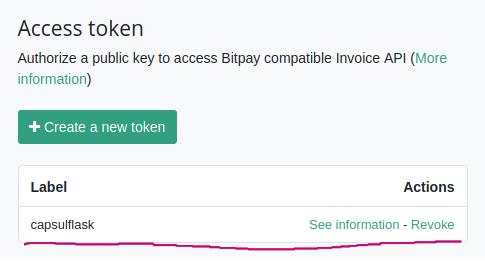capsulflask
Python Flask web application for capsul.org
how to run locally
Ensure you have the pre-requisites for the psycopg2 Postgres database adapter package
sudo apt install python3-dev libpq-dev
pg_config --version
Ensure you have the wonderful pipenv python package management and virtual environment cli
sudo apt install pipenv
Create python virtual environment and install packages
# install deps
pipenv install
# load the deps into $PATH
pipenv shell
Run an instance of Postgres (I used docker for this, you can use whatever you want, point is its listening on localhost:5432)
docker run --rm -it -e POSTGRES_PASSWORD=dev -p 5432:5432 postgres
Modify the default email settings
nano capsulflask/__init__.py
Run the app
FLASK_APP=capsulflask flask run
Run the app in gunicorn
.venv/bin/gunicorn --bind 127.0.0.1:5000 capsulflask:app
postgres database schema management
capsulflask has a concept of a schema version. When the application starts, it will query the database for a table named
schemaversion that has one row and one column (version). If the version it finds is not equal to the desiredSchemaVersion variable set in db.py, it will run migration scripts from the schema_migrations folder one by one until the schemaversion table shows the correct version.
For example, the script named 02_up_xyz.sql should contain code that migrates the database from schema version 1 to schema version 2. Likewise, the script 02_down_xyz.sql should contain code that migrates from schema version 2 back to schema version 1.
IMPORTANT: if you need to make changes to the schema, make a NEW schema version. DO NOT EDIT the existing schema versions.
In general, for safety, schema version upgrades should not delete data. Schema version downgrades will simply throw an error and exit for now.
how to setup btcpay server
Generate a private key and the accompanying bitpay SIN for the bitpay API client.
I used this code as an example: https://github.com/bitpay/bitpay-python/blob/master/bitpay/key_utils.py#L6
$ python ./readme/generate_btcpay_keys.py
It should output something looking like this:
-----BEGIN EC PRIVATE KEY-----
EXAMPLEIArx/EXAMPLEKH23EXAMPLEsYXEXAMPLE5qdEXAMPLEcFHoAcEXAMPLEK
oUQDQgAEnWs47PT8+ihhzyvXX6/yYMAWWODluRTR2Ix6ZY7Z+MV7v0W1maJzqeqq
NQ+cpBvPDbyrDk9+Uf/sEaRCma094g==
-----END EC PRIVATE KEY-----
EXAMPLEwzAEXAMPLEEXAMPLEURD7EXAMPLE
In order to register the key with the btcpay server, you have to first generate a pairing token using the btcpay server interface. This requires your btcpay server account to have access to the capsul store. Ask Cass about this.
Navigate to Manage store: Access Tokens at: https://btcpay.cyberia.club/stores/<store-id>/Tokens
Finally, send an http request to the btcpay server to complete the pairing:
curl -H "Content-Type: application/json" https://btcpay.cyberia.club/tokens -d "{'id': 'EXAMPLEwzAEXAMPLEEXAMPLEURD7EXAMPLE', 'pairingCode': 'XXXXXXX'}"
It should respond with a token:
{"data":[{"policies":[],"pairingCode":"XXXXXXX","pairingExpiration":1589473817597,"dateCreated":1589472917597,"facade":"merchant","token":"xxxxxxxxxxxxxxxxxxxxxxxxxxxxxxxxxxxxxxxxxxxx","label":"capsulflask"}]}
And you should see the token in the btcpay server UI:
Now simply set your BTCPAY_PRIVATE_KEY private key in .env
BTCPAY_PRIVATE_KEY='-----BEGIN EC PRIVATE KEY-----
EXAMPLEIArx/EXAMPLEKH23EXAMPLEsYXEXAMPLE5qdEXAMPLEcFHoAcEXAMPLEK
oUQDQgAEnWs47PT8+ihhzyvXX6/yYMAWWODluRTR2Ix6ZY7Z+MV7v0W1maJzqeqq
NQ+cpBvPDbyrDk9+Uf/sEaRCma094g==
-----END EC PRIVATE KEY-----'

